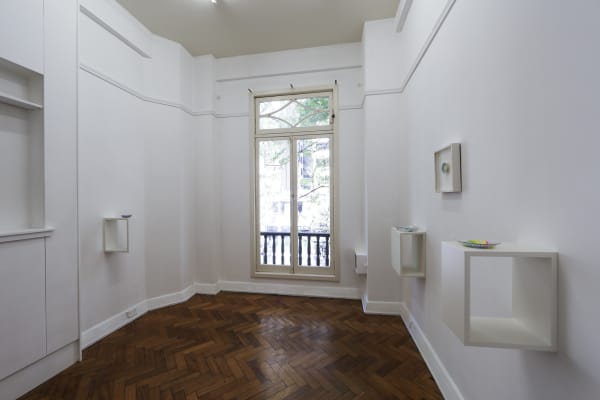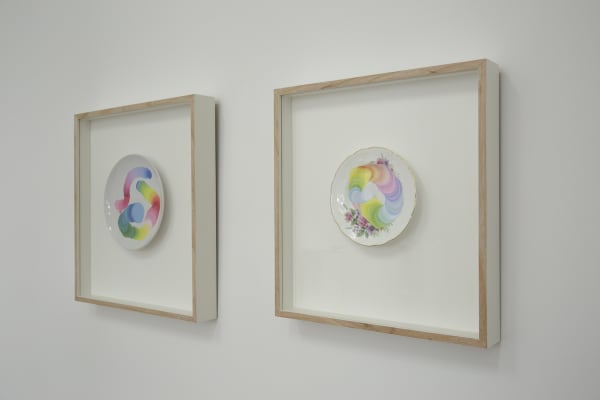Anna Finlayson: Subjective grid
Anna Finlayson: subjective grid comprises two distinct yet related components: a suite of drawings using pencil and gouache and paintings on various china, crystal and glass plates.
The obsessively gridded works on paper continue Finlayson’s investigation into the subjectification of the grid through the creation of a narrative of process. Date and time are recorded at the commencement of the work, grids are calculated and ruled, calculations defining the parameters of the drawing are noted, coordinates are documented, lines are numbered and space is counted.
The notation and recording of the practice creates layers of data and information that not only create the works, but give us proof and evidence of the process of making and the presence of the maker. This information is part of the visual language of the drawing and an essential aesthetic component of the composition.
Using a limited selection of colours including primary red, primary blue, primary yellow, black and white - through the incremental addition of small amounts of colour, the colours move slowly through the spectrum. In some works the added colour is indicated through notation; in other works numeric systems are used to determine placement of colours and these systems create their own grids of information and structure.
The china, crystal and glass palettes also speak of process. As a deliberate gesture to emphasise and give value to the process of making, the palletes utilise a selection of china, crystal and glass plates. The palettes are created in unison with the works on paper and are at once a tool of making and a product of the process; they are a visualisation of the progression of the colour mixing. Their physicality is circular and organic in contrast to the geometric structure of the works on paper.
To further emphasis the importance of the process in the production of the drawings the palettes are meticulously framed and hung on the wall of the gallery alongside the works on paper. The drawings may be the end result, but the visual representation of the process through a narrative of notation reveals the subject and allows for an exchange between the viewer, the work and the maker.















